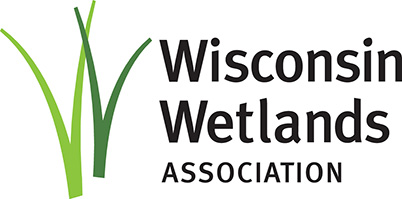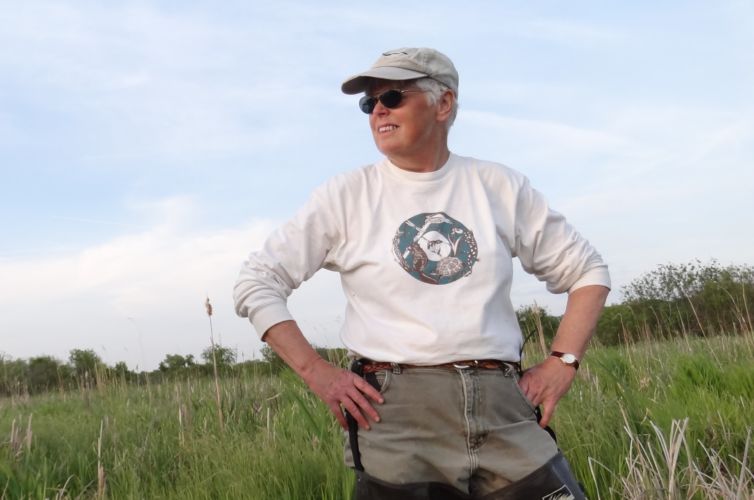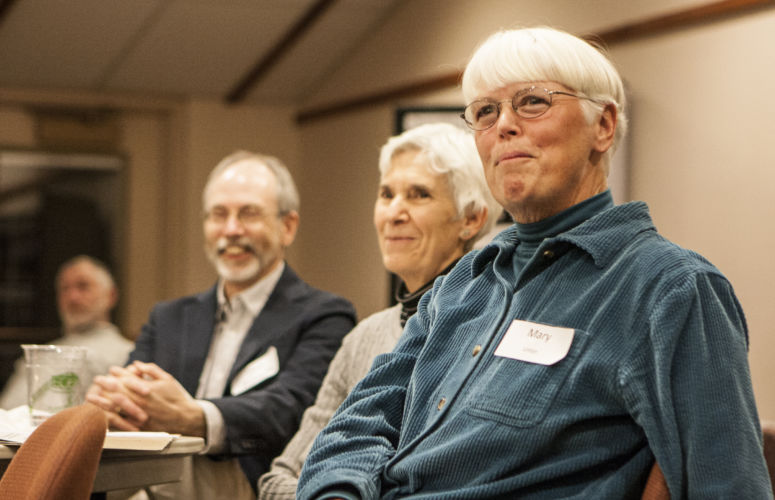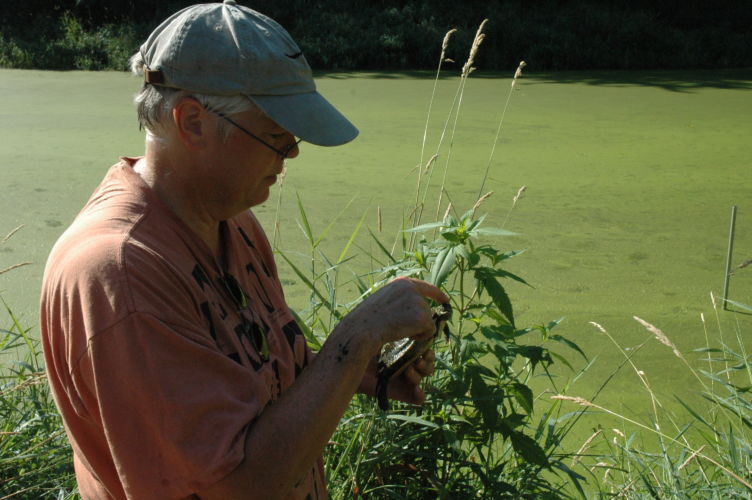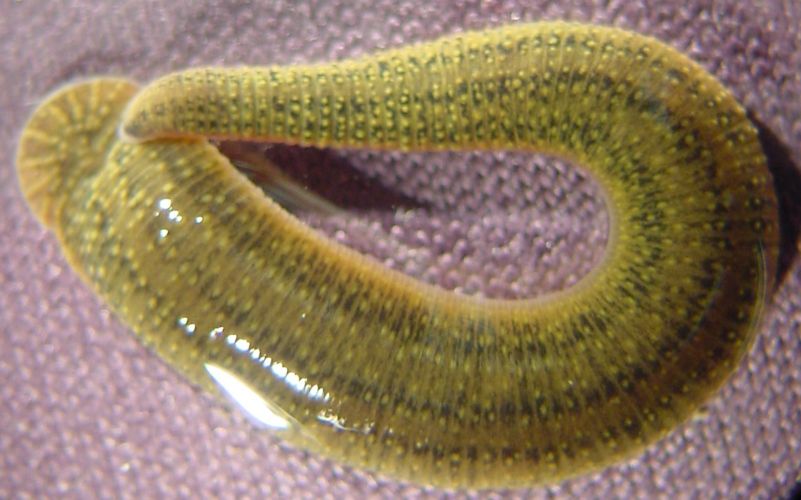We are saddened to share the news of the passing of our friend Mary Catherine Linton (July 23, 1954 – June 13, 2021).
Mary was a wetland scientist, aquatic ecologist, educator, and published poet. She grew up on a farm near Midland, Michigan, loving science and literature. She graduated valedictorian of her class from Bullock Creek High School. Alzheimer’s disease took her too soon; she was spirited to the end near her family in Bay City, Michigan.
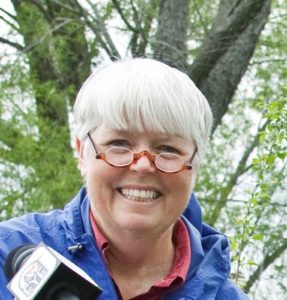 Mary obtained a Bachelor’s of Science at Michigan State University in 1975, a Masters in Biology at Michigan Technological University in 1982, and a Ph.D. at the University of Kentucky in 1995. She was an Assistant and then Associate Professor of Biology from 1989-2002 at Goshen College, Indiana, where she researched Ambystomatid (mole) salamanders at the Merry Lea Environmental Learning Center at Goshen College. Linton was an Assistant Professor of Biology at the University of Wisconsin-Whitewater from 2002-2007. In 2007, she became an ecological and wetland consultant as “Snapping Linton Ecology,” assisting with wetland projects in southern Wisconsin. She was a Certified Ecologist with the Ecological Society of America and a member of the Society of Wetland Scientists. Linton was a Board Member of the Wisconsin Wetlands Association from 2005-2012. She served as Board Chair from 2008-2012, leading the state-wide wetland organization during a pivotal transition to wider membership and influence.
Mary obtained a Bachelor’s of Science at Michigan State University in 1975, a Masters in Biology at Michigan Technological University in 1982, and a Ph.D. at the University of Kentucky in 1995. She was an Assistant and then Associate Professor of Biology from 1989-2002 at Goshen College, Indiana, where she researched Ambystomatid (mole) salamanders at the Merry Lea Environmental Learning Center at Goshen College. Linton was an Assistant Professor of Biology at the University of Wisconsin-Whitewater from 2002-2007. In 2007, she became an ecological and wetland consultant as “Snapping Linton Ecology,” assisting with wetland projects in southern Wisconsin. She was a Certified Ecologist with the Ecological Society of America and a member of the Society of Wetland Scientists. Linton was a Board Member of the Wisconsin Wetlands Association from 2005-2012. She served as Board Chair from 2008-2012, leading the state-wide wetland organization during a pivotal transition to wider membership and influence.
Linton specialized in the life history and biology of salamanders and the ecology of ephemeral ponds—an overlooked but biologically rich wetland type important to the life cycles of amphibians. She surveyed Blanding’s turtles (a Wisconsin special concern species) in Middleton’s Pheasant Branch Conservancy and in Delevan, WI. As an educator, she inspired young people to explore wetland ecology and the interrelationships of ephemeral ponds, salamanders, frogs, turtles, and woodlands. She gave engaging, lively workshops and talks about the ecology of and need to protect wetlands. From salamanders to dragonflies, her interests were as rich as the landscapes she studied.
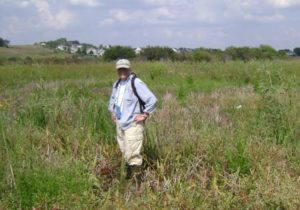 Her work as a poet included hundreds of poems, some of which published in Aelthlon, Friends Journal, Hummingbird, Seeding the Snow, and Verse Wisconsin. Using nature and wetlands in her poetry, she spoke to our connections to the natural world and often used humor to engage the reader. She taught poetry workshops outdoors, bringing people into the habitats that affirmed her. She inaugurated a wetland poetry session at the Wisconsin Wetlands Association’s annual science conference, a session that is now named the Mary Linton Wetland Poetry Session in her honor. Her poetry will be permanently housed at the Hoard Historical Museum in Fort Atkinson.
Her work as a poet included hundreds of poems, some of which published in Aelthlon, Friends Journal, Hummingbird, Seeding the Snow, and Verse Wisconsin. Using nature and wetlands in her poetry, she spoke to our connections to the natural world and often used humor to engage the reader. She taught poetry workshops outdoors, bringing people into the habitats that affirmed her. She inaugurated a wetland poetry session at the Wisconsin Wetlands Association’s annual science conference, a session that is now named the Mary Linton Wetland Poetry Session in her honor. Her poetry will be permanently housed at the Hoard Historical Museum in Fort Atkinson.
Mary and her wife, Kathy Kauffman, were married on June 12, 2014, and resided in Fort Atkinson, WI, from 2002 to 2020, where they were active in the community.
In Fort Atkinson, Mary was active in Heart of the City and was a featured scientist for the Fort Atkinson Science Fair. Many will remember her pithy presentation on frogs. Mary’s expertise regarding amphibians contributed greatly over the years to the Friends of Rose Lake. She attended Quaker Friends Meeting in Fort Atkinson. When Mary traveled, she sent postcards with poems or quips from wherever she was.
Mary withdrew from her life of science and poetry as she suffered from Alzheimer’s disease. Her legacy includes her love of science and poetry, curiosity, quick wit, and generous smile.
She is predeceased by her parents, Phyllis, nee Snyder, and William Harold Linton. She is survived by her wife, Kathy Kauffman, her sister Barbara, brothers William (Judy) and Robert (Patricia) Linton, and 68 nieces and nephews, including special nieces Greta Kauffman and Kara Kauffman.
“I Am
daughter of Phyllis
of wood thrush, daughter of Bessie
of bulrush of bluest dragonfly of Edith
of dolomite of dust”
Mary Linton, February 2011
Memorials may be sent to Wisconsin Wetlands Association, 214 N Hamilton St #201, Madison, WI 53703, or Friends of Rose Lake, Fort Atkinson, 428 Sherman Avenue, Fort Atkinson, WI.
Related content
Wetland Warrior: A tribute to Mary Linton
Poems for friends by Mary Linton
